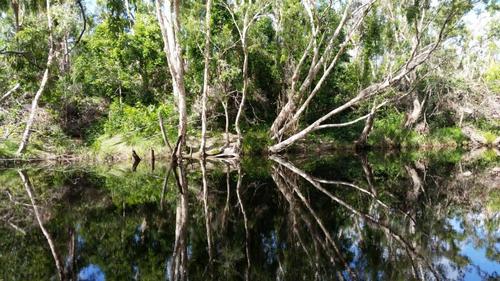Local Environment
Capricorn Coast
Set on the Tropic of Capricorn in Central Queensland, the Capricorn Coast is an undiscovered gem. With an average daily temperature of 25 degrees Celcius, the Capricorn Coast is a haven for long days in the warm sun all year round.
Pristine coastline, stretching 95 kilometres from Stanage Bay to the mouth of the mighty Fitzroy River, is speckled with small townships, beautiful beaches, fantastic fishing and much more. The coastal life would not be complete without the amazing Keppel Islands, a mere 30 minutes by boat, off the coast of Yeppoon.
This biologically diverse area is part of the largest undeveloped regions on the Australian East Coast and includes barramundi breeding grounds in Ramsar Wetlands around Corio Bay. The region's major waterway, Waterpark Creek, is host to ancient and towering remnant rainforest with many resident birds and animals.
Coastal Ecosystems
Coastlines are defined as the interface between land and sea. They have a distinct structure, diversity, and flow of energy and include salt marshes, mangroves, wetlands, estuaries, bays, and are home to many kinds of plants and animals.
Fourteen coastal ecosystems are present in the Great Barrier Reef Marine Park which adjoins the Capricorn Coast and these connect land to freshwater to the marine environment - click here for information GBRMPA coastal ecosystems.
Of those, Capricorn Coast Landcare is mostly concerned with the coastline (sandy beaches, rocky shores, dunal systems); estuaries (creeks, mangroves and mudflats); freshwater wetlands; coastal heath and shrublands (on steep hillslopes and bluffs); and woodlands.
What's in a Wetland?
Wetlands are more than just wet land. They are highly productive and important ecosystems that deliver many services.
- They capture energy and provide food for many animals.
- They provide important refuges for wildlife in times of drought.
- They are naturally beautiful places and provide opportunities for recreation activities such as boating, swimming, bushwalking and bird watching.
- They provide a natural water balance in the landscape and help to provide protection against floods.
- They have a role in providing water quality protection in the catchment by filtering pollutants such as sediments, nutrients, organic and inorganic matter and bacteria.
- They support a wide variety of flora (plants) and fauna (animals) and form different habitats and ecosystems.
- They provide nursery areas for fish, and breeding grounds for wildlife, particularly waterbirds.
- Wetlands provide vital habitat for some species of threatened fauna (animals).
- They provide refuge for migratory waterbirds that breed in the northern hemisphere in countries such as China and Siberia. Thousands of migratory waterbirds inhabit Australian wetlands each year.
- Many wetlands, are of cultural significance to aboriginal people.
- They provide opportunities for scientific research and are a source of education for the community.
Urban waterways and the Great Barrier Reef
Healthy waterways are vital to human well being. Not only do people in urban centres like Yeppoon rely on creeks for clean drinking water, recreational pursuits and scenic amenity, but wildlife and their supporting ecosystems also depend on them.
On the Capricorn Coast, creeks drain from the large adjoining catchment of the Fitzroy River Basin. Local waterways include Ross, Fig Tree, Limestone, Stony, Coorooman, and Water Park creeks. This network of waterways lie in close proximity to Keppel Bay and the Great Barrier Reef Marine Park and lagoon.
